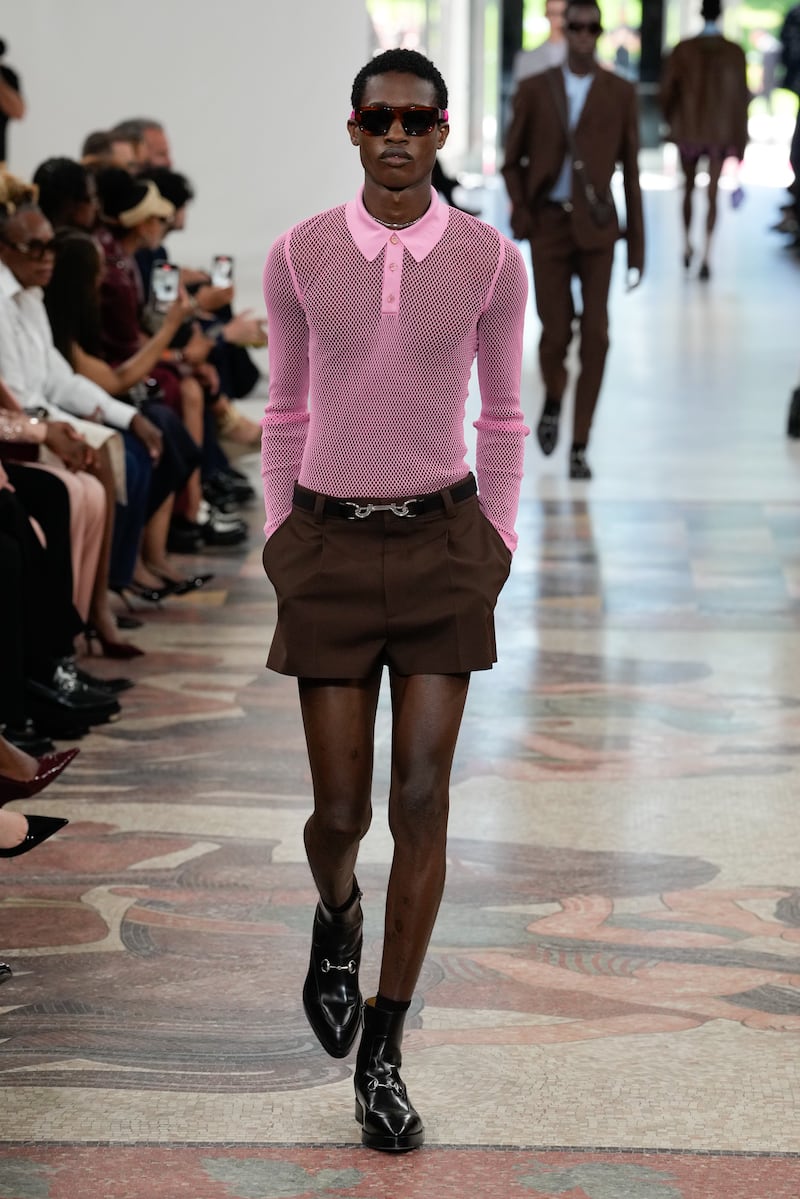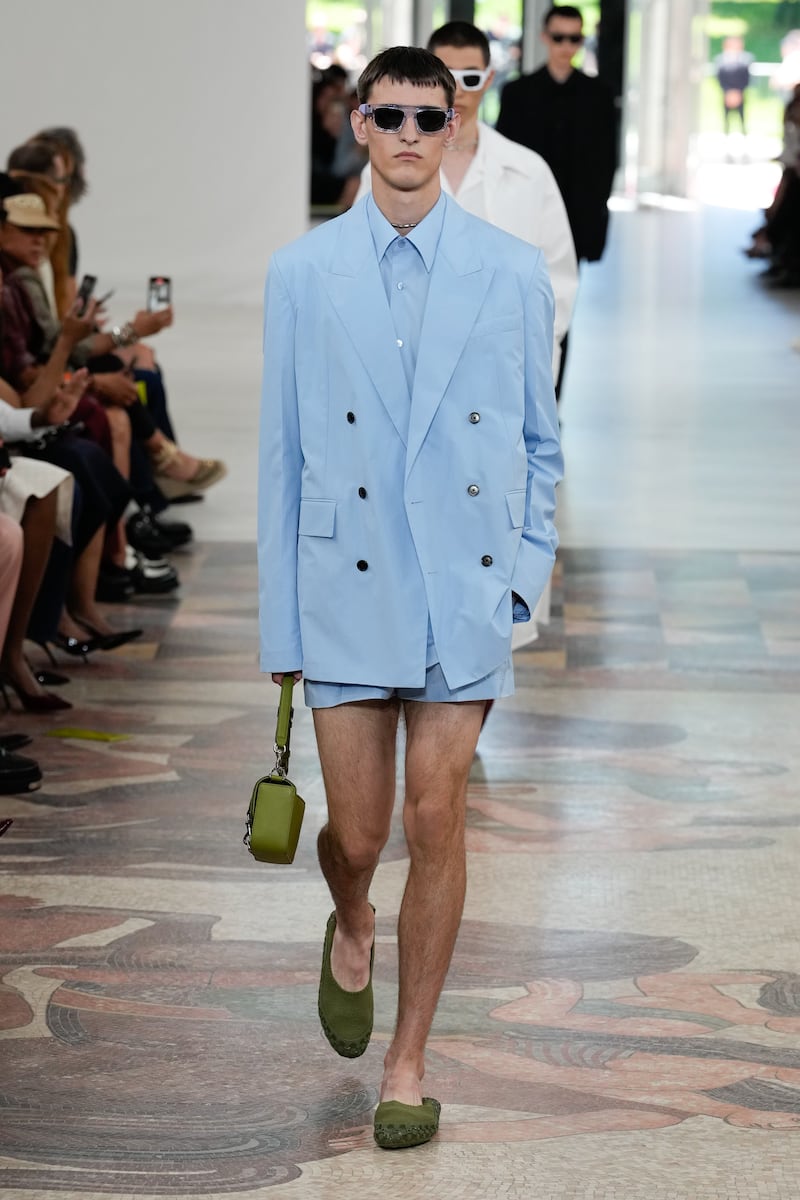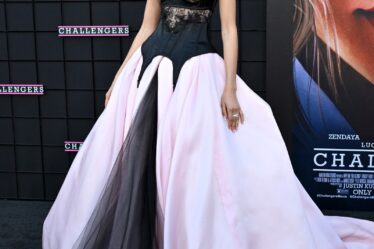
MILAN — Gucci presented its second menswear collection by creative director Sabato De Sarno in Milan Monday.
Where his January debut in the category had proposed a relatively muted palette of sensual, sartorial silhouettes, the Spring/Summer 2025 outing saw the designer incorporate more exuberant colours, prints and textures. An absinthe leather coat opened the show, followed by mesh going-out tops in carnation and plum, tangerine bags and lilac sneakers. Those colour-blocked silhouettes were interspersed with more classic tailoring, as well as a range of camp shirts rendered in willfully garish prints, in which the predictable vocabulary of dolphins, surfboards and banana leaves got a fresh twist from high-contrast, essentialist tessellations.
The more sporty, colourful lineup could appease clients who have grown attached to Gucci’s identity as the fun luxury megabrand. That positioning has eroded somewhat during a year of palette-cleansing efforts aimed at reasserting the brand’s heritage and the lasting value of its iconic products.
The show was unlikely, however, to reassure stakeholders who are growing impatient for Gucci and De Sarno to tell a more expansive fashion story that goes beyond proposing desirable items, which is only part of the job at a brand at Gucci’s scale.
Monday’s collection was staged in the atrium of Milan’s Triennale Museum in an echo of Gucci’s May womenswear show at the Tate Modern, gestures apparently aimed at aligning the brand with modern and contemporary creation. But there were no works on display at the closed museum (where guests were confined to the atrium), no installations staged or artworks commissioned to foster a dialogue with the unique setting, excepting a quote from Saint Augustine about “love without measure” which was inscribed on the museum steps, but only visible from above. We could have been anywhere.

That left us with only the collection to consider: a concise range of 46 looks in 8 minutes, which one might also have seen at any number of brands. The boxy, utilitarian camp shirts and short shorts felt lifted from Prada, while the colour-blocked creative tailoring ensembles, while desirable, carried more than a whiff of Pierpaolo Piccioli’s Valentino. Logoed lanyards, the occasional embossed monogram, carabiners and horse-bit hardware on leather goods were the only clear signs that we were at GuccI, along with the heightened sense of refinement that De Sarno has brought to the house since his September debut.
To be fair, “get in, look at clothes, get out,” is often the brief at Milan fashion shows (in contrast to the immersive experiences regularly staged by French megabrands, or by Italian outlier Prada). And De Sarno faces an uphill battle to find fresh angles on Gucci’s archive after eight years of former designer Alessandro Michele’s maximalist approach, during which an exhaustive menu of the brand’s codes and signatures were piled on simultaneously, and repeated season after season to the point of customer fatigue. The solutions may lie outside Gucci’s garden.
Profits are also under pressure as a broad slowdown in luxury demand heaps additional difficulty on Gucci’s plan to simultaneously hone a more stable upmarket image, while transitioning to a new designer’s vision. As such, whether the brand’s reduced scope of action stems from a lack of clear direction on De Sarno’s part, or from a lack of resources and vision elsewhere in the business is unclear.
Perhaps Gucci believes it can no longer afford to tell stories? With sales down 20 percent in the first quarter, one might just as easily say that they can’t afford not to. Efforts to spotlight De Sarno’s dialogue with 20th century Milanese creation, including an art book and recent capsule celebrating iconic Italian furniture design, seem calibrated for a small segment of Gucci’s audience.
An inscription on the museum’s wall stated that “the future has never been so present.” On the last day of an Italian menswear season where front-row chatter focused on concern over slowing sales, soaring prices and static creativity, and as a backdrop to a diminished outing for the country’s biggest brand, that maxim was hardly reassuring.



